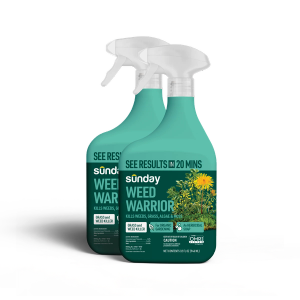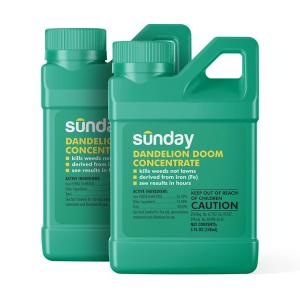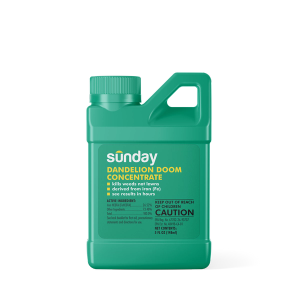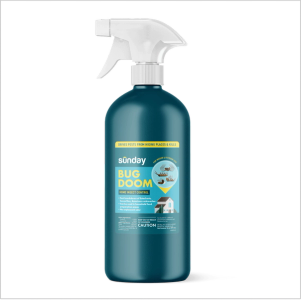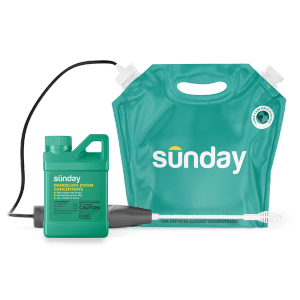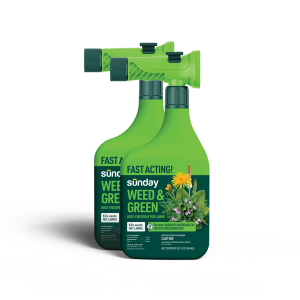What is clover?
Clover is really a beneficial lawn legume. A legume (think beans and peas!) is a plant with little nodules full of bacteria living on the roots to help “fix” nitrogen from the air.
This is great for your lawn because that nitrogen can then be transferred to your grass as a natural fertilizer! Clover is also fantastic for bees and other pollinators.
But we understand that homeowners don’t always feel lucky to have clover on their lawns, and it can be tricky to get rid of.
How to manage clover in your lawn
Our lawn care approach is focused on integrated pest management (IPM). This sustainable solution is based on proper identification, monitoring, prevention, and opting for less harmful treatment of pests—including unwanted clover.
Step 1: ID the weed
Clover has “trifoliate” leaves, with three (or, if you’re lucky, four!) leaflets. There are a few clover species that are common in lawns:
- White clover: Leaflets are rounded and have a white “watermark”; flowers form white globes, sometimes with a pink or brownish base.
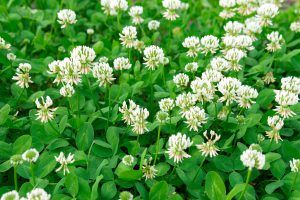
- Strawberry clover: Leaflets are more oblong with lighter colored veins, but no watermark; flowers form a pink globe, and will transform to a puffy white or tan fruiting head that looks like an unripe raspberry.
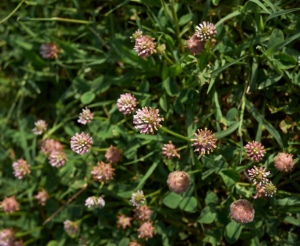
- Red clover: Leaflets are oblong or oval, often with a white or light green v-shaped watermark; flowers form a pink or purple-pink globe.
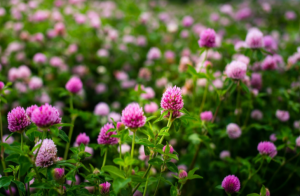
Step 2. Remove flowers
Clover flowers produce a lot of little seeds which spread and build up in the soil over time. Remove the flowers as soon as you see them to reduce seed production. You can pick flowers by hand (save them for a little bouquet, or make a flower crown by weaving them together!) or mow them off in the early morning to avoid harming pollinators who might feed on clover during the day.
Step 3: Manually remove (if you can)
The more clover (and weeds in general!) you can pull by hand or remove by shovel, the less herbicide you'll have to spray.
Sunday Tip:
Protect the pollinators you love in your backyard by mowing clover or removing flowers by hand from clover and other weeds before spraying herbicides.
Step 4: Treat the rest
As with most weeds, the earlier you spray them, the better. Smaller, younger weeds are generally easier to get rid of than mature plants due to smaller roots.
We recommend Weed & Green lawn spray or Dandelion Doom spot treatment for treating clover in lawns. These selective herbicides target broadleaf weeds like clover—without harming your grass.
Weed & Green Pre-Emergent
Weed & Green Hose-End Spray for Lawns is an iron-powered pre- and post-emergent weed killer that controls clover and simultaneously greens up your lawn. And the application is as easy as watering your lawn.
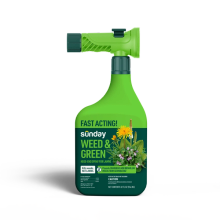
Weed & Green Pre-emergent and Post-Emergent Weed Killer
- Hose-end broadcast lawn spray
- Prevents crabgrass & weeds
- Controls weeds, moss & disease
- Greens up lawn quickly
Dandelion Doom
Dandelion Doom is available in a 32 oz. Ready-to-use spray for small patches or a concentrate better suited for larger applications. Bonus? This formula kills weeds down to the root—so you can rest easy knowing your clover is kaput.
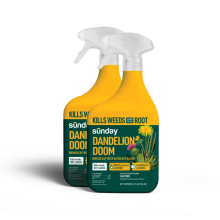
Dandelion Doom Weed Killer Spot Treatment (2-pack)
- Ready-to-use 32 oz. spray
- Derived from Iron (Fe)
- Controls weeds, moss, disease
- Fast acting—results within hours

Dandelion Doom Lawn Weed Killer - Starter Pack
- Easy to spray herbicide kit
- Derived from Iron (Fe)
- Controls weeds, moss, disease
- Fast acting—results within hours
Step 5. Patch bare spots
After you get rid of clover clumps, patch bare areas. This will help fill in bare weeded areas and help prevent future weeds from invading those areas.
- For cool-season grasses, you can seed bare patches.
- Depending on the species, you may need to patch small bare spots with plugs or seeds for warm-season grasses.
And when you're ready, a Sunday custom lawn plan is here to help you every step of the way!
Other weeds that look like clover
Below are some common clover look-alikes, along with quick tips on how to tell them apart from clover:
Black medic
Leaves are also trifoliate, but leaflets have a little “spur” or point at the tip that isn’t present on clover leaves; flowers are small, yellow, and form black grape-like clusters of seeds.

Creeping Charlie (ground ivy)
Leaves are kidney-shaped and scalloped on the edges; stem is square (like all plants in the mint family!) and has a minty scent when crushed; flowers are purple.
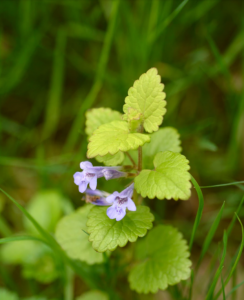
Chickweed
Leaves are shiny and oblong; flowers look like tiny white stars.

Woodsorrel (Oxalis)
Distinct three-heart–shaped leaflets per leaf; leaflets may fold in half in the heat or at night; flowers are five-petaled and yellow.
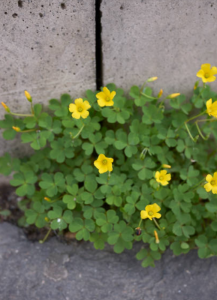
Sunday Tip:
Woodsorrel is easy to hand-pull due to its shallow roots. No chemicals needed here!
How to prevent clover in your lawn
- Know your lawn: Clovers can outcompete unhappy grass, particularly in low-nitrogen, high-phosphorus soils or wet and shaded areas. Plant the right grass and practice good lawn care to grow a healthy lawn.
- Fill in the grass: We recommend overseeding annually for cool-season lawns to keep your lawn thick and lush. A dense lawn will crowd out the weeds and make it harder for them to germinate and grow.
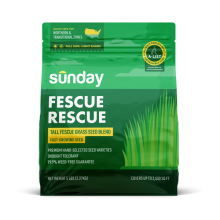
Fescue Rescue Grass Seed
- Drought tolerant
- 99.9% weed-free guarantee
- Northern, transitional climate
- A-LIST-approved varieties for their high quality and low water, fertilizer, and pesticide needs
Sunday Tip:
Got a warm-season lawn? Unfortunately, overseeding isn’t always an option as many warm-season grasses can’t be seeded. If you can’t overseed, plug or sprig bare areas to fill them in before the weeds take over!
A few weeds will occasionally pop up, and that’s okay.
But, if you consistently have a lot of clover in your lawn, that usually indicates some underlying soil issue. Some final tips to help your grass grow strong and help fight clover infestations over time:
- Growing the right grass
- Mowing at the optimum height
- Fertilizing correctly
- Avoiding common watering mistakes
Let's get growing
Our lawn engine uses satellite data to map out your lawn size and determine things like average rainfall, common weeds, and pest activity.







